#toyoko kids
Text

#jirai onna#jirai kei#landmine girl#angel#yami kawaii#menhera#monster energy#japanese fashion#jfashion#kabukicho#toyoko kids
396 notes
·
View notes
Text
Japanese Teens' Perspective on the Toyoko Kids
youtube
This video focuses on interviewing three teenagers that often come to Kabukicho in their spare time. They're able to give their perspective on the Toyoko Kids, while also speaking about the struggles they face in their daily lives.
(Note: most of the people interviewed don't consider themselves a part of the Toyoko Kids, but one does.)
When it comes to the coverage of the Toyoko Kids in Japan, most of it is written by adults who aren't as affected from the situation. So hearing out the perspective of those who are closely connected to these runaway kids can help others get a better understanding of the overall picture.
One ex-host being interviewed has expressed that it's best to not join the Toyoko Kids. He recognizes that some people have no other place to go, but mentions the dangers of having to sell your body to survive.
Hopefully, this video can give you a better understanding of the situation revolving the Toyoko Kids, and a wake up call when it comes to the glamorization of this topic.
51 notes
·
View notes
Text
To me, it's very difficult to keep friends. When i'm down, i just don't return messages and this behavior is a shit for my friends.
I really love you all, i just can't answer. It's really hard to me.
I hate myself bc i can't answer a message like average people
#jirai girl#jirai onna#jiraiblogging#jirai kei#jiraiblr#menhera#toyoko kids#landmineblr#landmine kei#landmine type#landmine girl
24 notes
·
View notes
Link
As people keep asking for english articles on the Toyoko Kids, here an extensive one that's more recent.
81 notes
·
View notes
Text



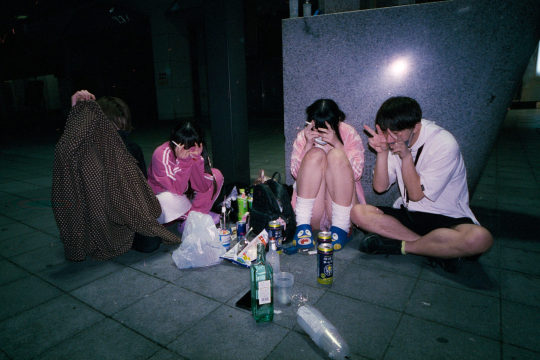


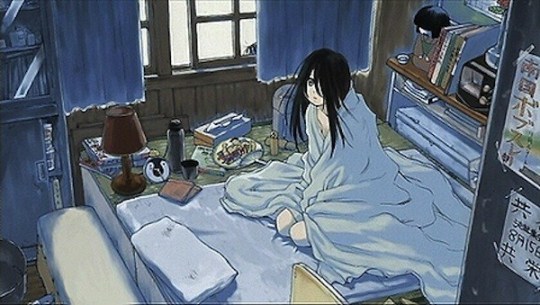
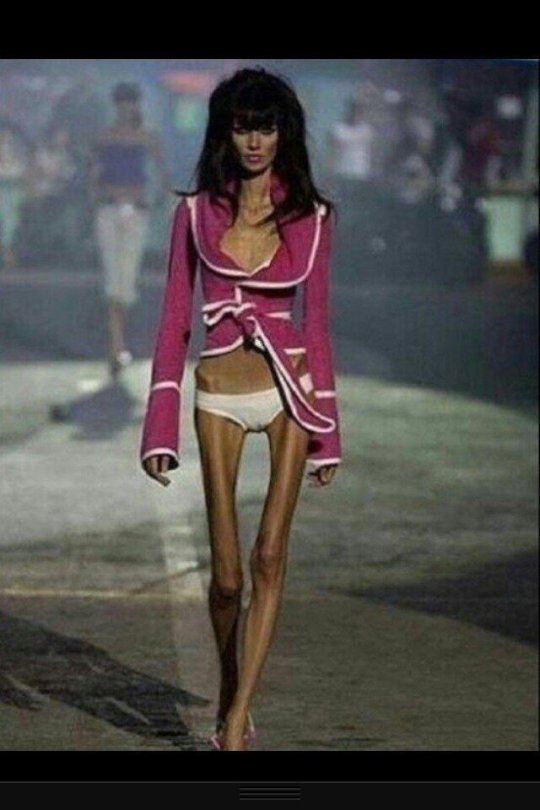
#fashion sick#depressing shit#i want to cvt#deathsp0#hikikomori#Toyoko kids#moda enferma#ana rant#2014 tumblr
10 notes
·
View notes
Text
In case the article ever goes down, here is an archived version.
While many of the articles posted on this blog have been quite old, this one is not, and is only a few days old at the time of this posting.
It is part 3 of a set of articles on the topics of Kabuki-cho and the culture of the Toyoko kids gang, which can all be accessed from both the original and the archived link.
This article specifically is a testimonial from a mother whose 15-year old daughter became embroiled in the culture of the Toyoko kids. It is mentioned that at first, she expressed interest in "landmine fashion", but it gradually spiraled into the girl finding people online and heavily participating in the drinking and drug abuse culture the group is known for.
#tw drug abuse#tw alcohol abuse#tw overdose#toyoko kids#j*rai#kabukicho#japanese#article#girly discourse
91 notes
·
View notes
Text
youtube
8 notes
·
View notes
Text
my theory on the reason why so many western "jirai" influencers and articles reporting on the phenomenon don't talk about (or straight up lie about) things such as the toyoko kids, self harm, sex work, and drug addiction is because they want to make it a more palatable and marketable thing for western audiences. these real life issues that cannot be ignored are not good for selling frilly clothes and marketing your social media account, so they intentionally obscure them and try to appeal to audiences by saying it's a "reclamation of mental health" similar to menhera, when that's just not true. the reality of the issues that actual japanese landmines face are swept under the rug by westerners trying to market it as a new trendy fashion, taking the actual landmine out of the landmine type, which is think is disgusting. using the "cute aesthetic" of a serious problem in japan to sell and promote yourself is absolutely vile.
166 notes
·
View notes
Text
jirai kei as a trend and the inherent ableism and racism present within it
if you've been present in any japanese fashion or vtuber spaces for the past few years, chances are you've most likely heard of jirai kei. it's gotten major media attention in japan, and inevitably its popularity has spread overseas. what is still misinterpreted about it, however, is that jirai kei is a fashion style. jirai kei is a stereotype, as well as a subculture that features fashion elements. as opposed to the fashion aspects, the focus of the subculture is mental illness, and many people use the jirai tags and labels to find those with similar struggles and interests. you can learn more about the recent history of jirai kei as a stereotype here, and the fashions associated with jirai kei here.
jirai kei as a stereotype is bad for a multitude of reasons, but there are many people who seem to think that there's nothing wrong with the trend itself. i've seen many arguments in favor of it, ranging from "if brands are using it, that must mean the term isn't that bad" to "plenty of japanese girls are using it to only refer to the fashion, and they don't actually lash out at others or self-harm." its usage by brands and everyday people are true, and that much cannot be argued. the problem comes from assuming that, because it's something widespread in japan, it can't possibly be as bad as people make it out to be. if this trend were to come from anywhere else, i'm almost certain that people would immediately question the morality of it for several reasons. this is going to be a long post, so i hope you have some time.
TW for mentions of self-harm, alcohol and drug abuse, and child sex trafficking below the cut.

a brief rundown of jirai kei's origins
to start, jirai kei's original coinage before the trend has existed since around the 90s. it was used by misogynistic men to refer to women who they believed exhibited signs of emotional instability. this was applied to completely harmless traits, and the criteria for someone being a landmine has drastically changed over the years. for example, the first common identifier was simply "a girl who looks put together." this sexist usage still extends to present times, but now it's often conflated with the current aestheticized definition of the term.
the source of the current iteration of jirai kei
the modern-day jirai kei stereotype comes almost entirely from a gang known as the toyoko kids, who reside in kabukicho. this gang contains many members ranging from ages 9 to 24 who have run away from their homes and families. they have been known for several activities, but the most publicized ones are cutting themselves in public circles, papa katsu (underage prostitution), heavily drinking, and overdosing on over-the-counter medications. majority of the gang members also wear japanese alternative fashions, with girly kei being the fashion that's most often present in the jirai kei stereotype.

where does the ableism come in?
the rise of the aesthetic trend peaked somewhere in 2020, where a "landmine makeup challenge" gained popularity online and resulted in various people attempting to mock and mimic the stereotype for clout. people would wear girly fashion, act "wild" or "crazy" on camera, and, at worst, pretend to cut their wrists or even use makeup to create fake self-harm scars. i don't believe i need to explain why faking self-harm for views is ableist. however, the ableism is also present in the supposed "lighter" aspects of the trend, particularly its sudden association with girly fashion.
during the height of jirai kei's popularity in japan, many brands had begun to sell pink x black girly coordinates, advertising them as jirai kei fashion. it's incredibly important to note that girly as a fashion has existed for several years prior, and that multiple people had already been wearing clothing that's abruptly being labeled jirai. as a result, you have all of these random people minding their business suddenly being labeled as "crazy psycho bitches" because of the clothes that they wear. as if that isn't enough, some brands went as far as to promote the more dangerous aspects of the stereotype as well. with attempts to pander to girls who are deemed "yandere" and "highly explosive," many shops, online influencers, and companies had directly and indirectly capitalized on the suffering of the toyoko kids by encouraging people to cut their wrists, manipulate their partners, binge drink, and lash out at others to engage in the "full landmine experience."
mental illness in japan is almost never taken seriously because it's seen as a personality flaw rather than something that needs treatment. the jirai kei trend only set back any progress made for mental health acknowledgement in society, as people perceived as landmines began to be harassed for wearing girly fashion. more girls were approached by men on the street trying to scout them for prostitution, and people gave away their wardrobe because "others assumed they were troublesome" for wearing it. from another perspective, the anti-recovery nature of the trend has also taken lives. some people who felt that they identified with the term had fully embraced the lifestyle that was commercialized and promoted as something "cute and fun," resulting in more people running away from home to be like the toyoko kids. these people, who have essentially been failed by the system, are simultaneously fetishized and shunned for the fact that they're struggling.

well, what about the racism?
the racism present in the jirai kei trend, from what i've seen, mainly comes from overseas communities. the perception that many people have of jirai kei tends to have its roots in orientalism. if you've ever witnessed how people tend to glorify japan in almost every context, this shouldn't be too surprising. what's concerning, however, is that much of this glorification of jirai still goes unacknowledged by the western j-fashion community.
when jirai kei gained popularity in japan's mainstream, people mistook the name of the stereotype for the name of the fashion. this mindset also translated over to western spaces without a second thought. as a result, when jirai kei as a stereotype was formally introduced to overseas j-fashion communities, some were confused and oddly adamant. it seemed like people thought, "there's no way that japan would endorse something so horrible. there has to be different explanations!" regardless of whether this idea was conscious or subconscious, it had begun what people now call "jirai discourse" in the community. many arguments were made in favor of using jirai kei to refer solely to girly fashion, as opposed to recognizing its origins and continuous usage as a derogatory term. an especially common viewpoint that's perpetuated is that jirai kei has been reclaimed or is in the process of being reclaimed, which is something that has several things wrong with it.
problems with thinking that jirai is "reclaimed, so it's fine to use"
firstly, reclamation is subjective. the assumption that the entirety of a minority group makes the unanimous decision to reclaim a term is frankly just implausible. even more popular words that are thrown around more casually nowadays are still debated in some circles on whether or not they should be used. for a term like jirai kei, something fairly recently coined and undoubtedly controversial in most contexts, the mere idea of reclamation amongst anyone would have to take a much longer time, and that's only if the stereotype starts getting taken seriously.
secondly, the only people who have the right to consider reclamation are the people who are directly affected by the usage of this term, which would be feminine-presenting native japanese people who are mentally ill. people overseas have argued in favor of reclaiming the term despite not being a part of the group that the term is actually used against. this is not something where you can take apart the criteria and suddenly claim that you're also affected by jirai kei's usage. for a comparison that may be easily understood, that's like if a nonblack woman tried to advocate for the reclamation of the "mammy" stereotype, which stereotypes and therefore only affects the perception of black women. just because both groups consist of women, that doesn't mean they have the exact same experience with the stereotype in question, even if they happen to resonate with some aspect of it. unless you've grown up in japan as someone afab and/or feminine-presenting and have struggled with mental health, it's nearly impossible to fully identify with the extent of jirai kei's harm because it's occurred in such a specific set of circumstances to a specific group of people. the only thing that should be done in this case is doing your research on the affected group, which you can do by looking into the history of the toyoko kids and some of the individual stories of the members. that way, you can at least attain a better understanding of their perspectives and connect the effects of jirai kei to their struggles.
lastly, it is not reclaiming to simply use the term for yourself. this tends to be where the idea of jirai kei being reclaimed comes from, because many japanese girls on social media use the term to refer to themselves as well. in these instances, there are typically two separate reasons: one, the person is pretending to be a landmine for clout; or two, they genuinely identify with the derogatory meaning of the term. the latter is often the case, since there's not many other ways for people in japan who are mentally ill to find groups for themselves. when it comes to reclamation, it's important to remember that it's not simply using a word that was used against a group that you're a part of. reclaiming is about actively working to change a term's meaning into a neutral or positive context for the benefit of the group. none of these girls are doing that. there's no big effort in japanese landmine spaces to move the perception of being a landmine away from things like girly kei fashion, idol fan culture, or toxic behaviors, which leads me to the final section of this post.
it is not anyone's job to push for the "reclamation" of jirai kei.
i put reclamation in quotes because, although some genuinely may not have ill intentions, many people come off as having a "white savior" mindset as opposed to actually wanting to reclaim the term in any sense (which, as mentioned before, is not the right of just anyone), and it's usually for the sake of enjoying girly fashion without feeling bad for incorrectly calling it jirai kei. one of the defenses often used to propose that being seen as a landmine can actually be a good thing is that the people who do self-harm and abuse substances are simply "bad apples" in the landmine community. if they're not treated as the dirty underside, then they're seen as things to be pitied and sympathized with, but with the quick disclaimer of "don't worry though, not all landmines are like this!"
not only is this incredibly ableist, but this assumption being made by mainly white influencers is also rooted in the historical development of racism against asian people, particularly in the united states. if you've heard of the model minority myth, one of the biggest issues with it is that it heavily generalizes asian people as being well-mannered, good-natured, and upstanding citizens. as a result, anyone who seems to fall out of this generalization is deemed an "untrustworthy foreigner" and appears as nonexistent through a romanticized lens. this exact situation can be applied to how people tend to treat the issues surrounding the jirai kei trend. the japanese girls who are faking and/or making fun of mental instability for the sake of online popularity are suddenly being glorified as these ideal representations of jirai kei to be palatable to the western world. meanwhile, the people who are considered by many to be part of the lowest rungs of society and are actually getting this term thrown at them pejoratively are treated as an afterthought and not representative of what people overseas want jirai kei to mean. it's even to the extent where native japanese people using girly kei or being uncomfortable with jirai kei are immediately assumed to be faking their ethnicity or their japanese-speaking skills, something that many foreigners have actually done in an attempt to claim authority over jirai kei's usage. since the reality of the trend is so uncomfortable to many, people think that it's best to simply disregard it or dumb down its impact when that changes nothing. what has avoiding the topic of discrimination and fetishization ever done for anyone?
the last thing i want to point out is that, even if reclamation of the term was in progress, it would not be happening the way that some seem to think it is. if the term was being reclaimed, we would not have people (both overseas and in japan) still acting like the stereotype for tons of likes, namely by taking pictures of themselves in girly kei next to cans of pink monster while sitting on the sidewalk with someone handing them money. that is an actual image i've seen, and if that doesn't tell you that there's a problem, i'm not sure what else will.
#rise and shine#jfashion#japanese fashion#jirai kei#jirai onna#girly kei#alt fashion#alternative fashion
170 notes
·
View notes
Text
Explaining J-fashion sub cultures #1, Jirai kei
______________________________________________________________
WARNING!! This blog discuses about certain triggering topics such as suicide, illegal/violent behaviours, self harm, alcoholism and more. This post isn't graphic but if mentions of these topics trigger you, please click off/scroll away (っ◞‸◟ c)
______________________________________________________________
Hi hi hi everyone! I'm starting a new series discussing J-fashion sub cultures! If anything was incorrect or lost in translation, feel free to comment and tell me, so I can edit it ♡⸜(˶˃ ᵕ ˂˶)⸝♡
Moving on... Today we will be discussing Jirai kei!
Jirai kei is a relatively new fashion subcultre that popped up in the early 2020's that was based off/created in the area of Kabukicho. It has kind of an edgy look, usually paired with colours like black and pink (most common), or white and blue.
Now, where did the name Jirai Kei come from? In Japanese, 地雷 (jirai) is used as a slang term for describing something "dangerous" or "violent". 地雷 directly translates to landmine, henceforth the English name also being landmine girl. The reason why it is called jirai is that it is seen that the women/girls who participate in this sub culture are seen as violent, mentally unstable or manipulative. Jirai Onna (地雷女) is used as a derogatory term towards women. In the sub culture, the women who participate are Jirai Joshi (地雷女子) aka landmine women, and men, Jirai Dashi (地雷男子) aka landmine men.
Following on, the origins come from a Japanese Youtuber SuReRo who went viral in 2020 March, the term has since then gradually turned into a subculture. It is also said that the origins come from Toyoko kids. Toyoko kids are kids who are usually seen in Kabukicho who are "run away kids" aged 10-18.
Now onto the brighter topics, the style comes from other styles such as Japanese girly fashion and yami kawaii. Some of the style basics consist of, high-waisted skirts or shorts adorned with laces and frills usually in colour pallets like black and pink being the most common, white and blue, and occasionally red and black. Mary Janes are very popular considering that most shoes worn with jirai kei are platformers.
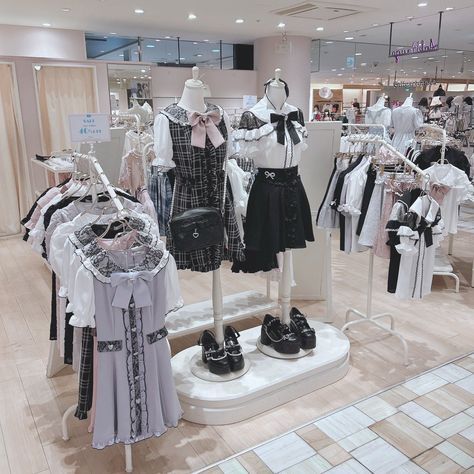

For the hair and makeup, the makeup consists of an exaggerated version of byojaku with a red or pink under eye blush. Usually their foundation is very pale, and the makeup exaggerates a tear bag or ageyo sal. For the hair, pigtails with black hair, highlights and bangs is very common in jirai kei but, there are many other hairstyles to try from in jirai kei!
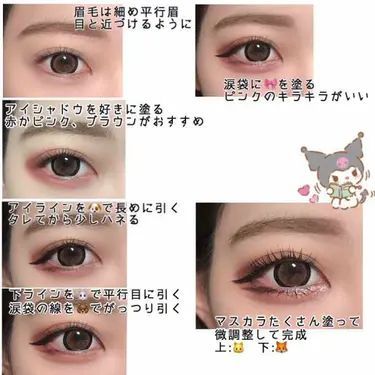
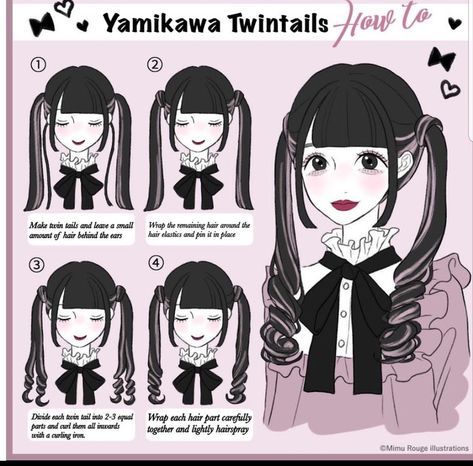
Next off, the reason that this sub culture is seen in a derogatory way comes from some criticism/controversies, such as mental illness, self harm, drug usage, sex work, underage prostitution, and other topics. And unfortunately, it is not uncommon to see most followers of this community participate in these activities.
In the community, most people encourage hyper consumerism and trend cycling, which can be problematic for western people because of the high shipping fees of proxies.
(little comment from me) I think another damaging thing is that a lot of people in the sub culture over use filters and heavily edit their face, which can be VERY damaging to your self-esteem.
______________________________________________________________
If you would like to participate in jirai kei or buy some clothes in the style, right below I will put some brands that you could possibly buy from!
Ank Rogue
42lolita (has a small section for jirai kei)
DearMyLove
LizLisa
Bubbles
Ma*rs
secret honey
rojita
And much more!
______________________________________________________________
NOTES: This post is in NO way trying to paint jirai kei as a bad or dangerous thing, I myself enjoy jirai kei. This post was made to inform others. If any of the things I've said were incorrect/lost in translation, PLEASE tell me, so I can fix my mistakes. My goal is to educate others about J fashion sub styles and in no way trying to mis inform others or demonise jirai kei. Also, im not sure if the brands ive mentioned ship internationally which im very sorry about (ᵕ—ᴗ—)
Sources/references that helped me build this post:
https://j-fashion.fandom.com/wiki/Jirai_Kei
https://aesthetics.fandom.com/wiki/Jirai_Kei#History
https://www.yokogaomag.com/editorial/jirai-kei
https://japan-glossy.fr/la-controverse-jirai-kei/
https://www.eviebunnie.com/2023/01/my-current-favourite-jirai-ryosangata.html
______________________________________________________________
Anyway if you've stuck around re blogging, liking, or even following me is always greatly appreciated!
Thank you for reading ૮꒰ྀི∩´ ᵕ `∩꒱ྀིა
#jirai kei#jirai onna#jirai girl#landmine girl#landmine kei#fashion#egl#japan#j fashion#writing#harajuku#harajuku fashion#makeup#anime#japanese#地雷系#地雷系女子#yami kawaii
24 notes
·
View notes
Text
tokyo revengers worldbuilding ₊˚⊹ ᰔ
an: hii!! ( ᵔ ᗜ ᵔ ) i am so excited about this post, even though i have practically nothing to put on it yet. as a huge tokyo revengers fan, i did (and am still doing) a lot of research about the anything i could find related to the manga. i want to make a fic with my own oc and all that, but i am afraid it won't come out anytime soon if i ever even write it, so i figured i could share the info i have to other tr fans. enjoy!
nb. links &+ will be coming out soon. i promise( ;´ - `;) iam still gathering all the info i wrote on different platforms!

→ shinichiro in philippines (the manila massacre)
→ the toyoko kids
→ mikey being shinichiro's favorite
→ synaesthetic hanma
#tokyo revengers#tokyo revengers spoilers#tokyo revengers headcanons#tokyo rev#tokrev#tokyo revengers meta
15 notes
·
View notes
Text
ramble just in case of my PoV on girly discourse as some adult late bloomer to j-fashion who wears j-fashion and worked on menhera as my graduation thesis before it went trendy on my country as a means to equal as landmine girls. this is just my personal opinion and hopefully the last time i will speak of this in this blog.
i personally do not use jirai kei because of personal sentiment, tho i wear girly kei stuff categorized as it. but like. i could totally understand why people flocks to it. first of all it's trending and kids these days loves anything trendy.
i think the most important of it is to understand the real harm the stereotypes had to girls who needed help BUT antagonizing people who does use the term to identify themselves does not help the cause at all.
most people who flocks to jirai kei as a term were hurt in some ways or another. while i draw the line at people LARPing as toyoko kids while they don't experience the pain such kids got through, the people who identify with jirai also deal with their own set mental problems that is not to be undermined (no puns intended).
my take is that harassing and attacking people over whether they use or not use the term is at the end just causing harm to every menhera people as outsider will see this as an excuse to say 'see? people who wear those / identify as those are mentally unstable and dangerous!'.
31 notes
·
View notes
Text
*Basic* Jirai Kei Winter 2024
Based on toyoko kids
for men:

The most basic pants to own atm are plaid pants, if it's red it punk vibe so to seperate from that most people have gray/ black plaid. But one of the men Jirai Kei brands does have colors such as Red and Purple so those are also seen sometimes.
Men tend to have a black , white or purple long sleeve shirt.
Since this winter is very cold, the Reflem or Travas fluffy coat is worn on top. Black and white colors are the hit this year.
ofc the big heeled shoes are a must!
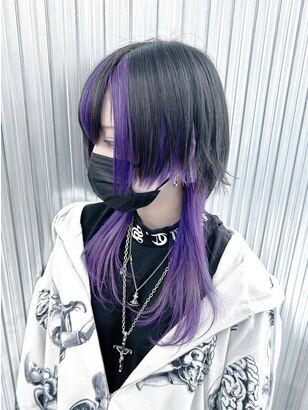
Men hair style this year the most popular is the Jellyfish with purple or red split dye with black, or just all purple/ red hair.
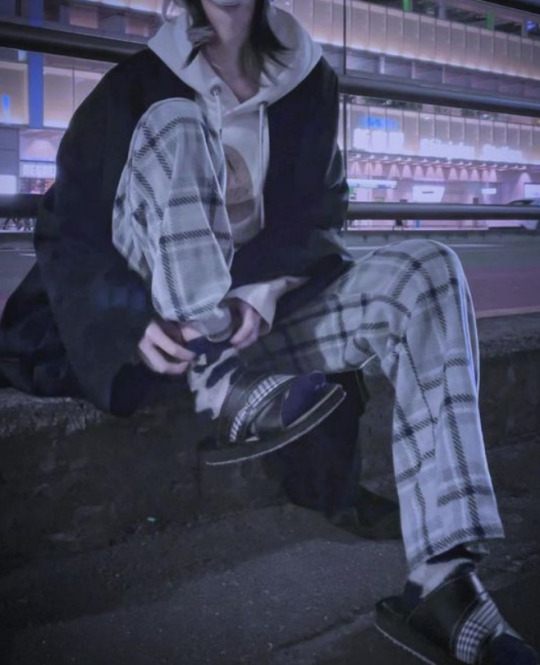
Women can ofc also wear the same trends as men. The type of plaid doesn't actually matter as long as it's long and neutral.

as for girls, this winter the one piece that I dislike so much is still as hot as ever. Long sleeved, black or black with the classic white stripes. Pink is also popular but not as much. Women still go out with bare legs regardless of weather but again often topped with the reflem/travas coat or with the reflem/nomie bunny coat.

Hair , still twin tails, not much changed there.
Pink+black combos of classic jirai kei outfits are no longer as popular and are seen a bit old school. If thats what you want to wear it's still acceptable.
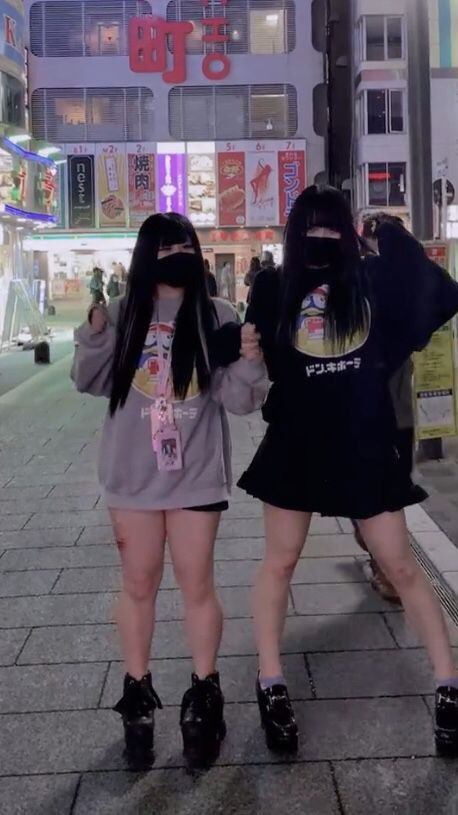
Donki over sized T-shirts with long sleeves is just as popular.
And lastely

Ofc course you'll still see these kids out in toyoko but these are considered old school and a tad cringe. I assume the reason it is still going on is because those that own these clothes are the runaway kids that cannot afford new items and have to rewear their old items.
Or of course this is just what they prefer. I do tend to only see younger kids wear these.
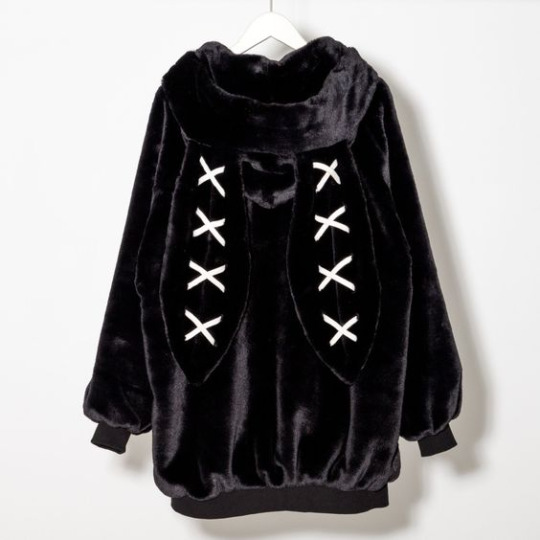
Reflem bunny coat, black and pink are most popular.

Travas coat
8 notes
·
View notes
Text
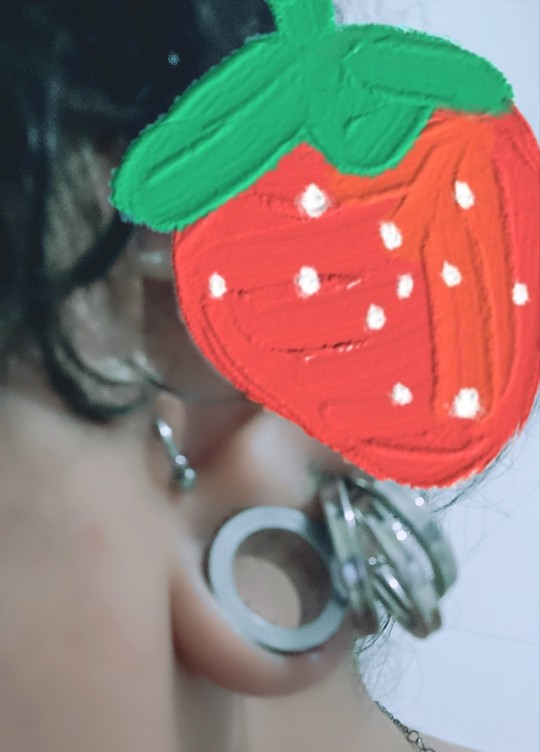
Right ear 🎀
#jirai girl#jirai onna#jiraiblogging#jirai kei#jiraiblr#toyoko kids#landmineblr#landmine kei#landmine type#landmine girl#jirai kei piercings
5 notes
·
View notes
Text
An interesting article about the history of the leader of the Toyoko Kids, Howl. This details his yakuza background, how he used a false title of social worker to take control of the gang, the way he went about creating the current hierarchy within the gang, and the murder and child r*pe charges he currently faces. You can find more information on this man, the face of Toyoko Kids, by searching for 「歌舞伎町卍会」. This is not an innocent group. This is a gang currently led by a r*pist, with a hierarchy, that convinces kids, teens, and young adults to run away to the red-light district, is responsible for lynchings, stabbings, child prostitution, and drug dealing. This gang is why 地雷系 is associated with any aesthetics at all, because the runaway girls who work for this gang frequently donned a few pre-existing fashions to please Howl - to try to be his "type". This is the origin of "jirai kei" as the west knows it.
235 notes
·
View notes
Text
*Preview* Cruel Fate: 11:40 pm (Another Level: Shibuya installment part 6)
Update: POSTED
Incident Report:
At approximately 7:00 pm on October 31st, 2018, a curtain with a 400-meter radius was cast centered at The Tokyu Department Store Toyoko Branch.
The curtain allowed entry and exit by Jujutsu Sorcerers and Jujutsu Tech Auxillary Managers, trapping only non-sorcerers.
Civilians located inside were heard repeating one phrase:
“BRING GOJO SATORU.”
You can read Another Level on AO3 :)
“Looks like the cavalry’s finally fucking here,” Rinko said quietly as she saw Kusakabe in front of Hime with his sword drawn. He’d used his Simple Domain to block the rest of them from the blast.
Patting Miwa’s head gently, she smiled as the girl lifted her eyes to stare at her.
“You good, kid?”
“Rinko-sensei,” she breathed. “How did you-”
One thing she could right from last year.
Turning back to meet Geto’s eyes, she felt her chest lift. It only felt fucking right that she got to use it against that asshole.
For Touma.
#jjk shibuya spoilers#gojo satoru x original female character#gojo satoru fanfic#gojo satoru#jujutsu gojo#gojo fanfic#another level#rinko is a badass and we stan#rinko kurisaki aka my favorite oc i've ever written#rinko kurisaki is a lil bean but also a lil shit but we love her so much#jjk fanfic
15 notes
·
View notes